Matador Network's Blog, page 191
March 27, 2024
20 Reasons to Love Virginia’s Fairfax County in 2024

Fairfax County is Americana at its most dignified. From George Washington to Lucy Burns, from cherry blossoms to waterfalls, from world-class museums to Frank Lloyd Wright homes, this corner of Virginia — just across the Potomac River from Washington, DC — offers monuments to culture, masterpieces of nature, and so much more.
From its nearly 300-year history, we could come up with 300 reasons to love Fairfax County, but that’d take a while. Instead, here are the top 20 reasons to love — and visit! — Fairfax County in 2024.
1. You can walk in the footsteps of America’s first President…
Photo: George Washington’s Mount Vernon/Visit Fairfax
The most visited historic estate in the United States, George Washington’s Mount Vernon still stands high in Fairfax County, on a hill overlooking the Potomac River. The venerated Virginian veteran lived here from 1754 until his death in 1799 — today’s visitors can explore both his immaculate home and its 500-acre grounds, which include his successful whiskey distillery. (More on that later.)
2. …and on trails blazed by pilots and astronauts.
Photo: Visit Fairfax
Everyone becomes a space geek when they step inside the National Air and Space Museum Steven F. Udvar-Hazy Center, where thousands of aviation and space artifacts, from Space Shuttle Discovery to a Blackbird SR-71, rest across two large hangars. Not to be confused with the National Air and Space Museum on Washington’s National Mall, this is a twin-sister facility with a larger footprint.
3. You’ll see how George Washington meets Frank Lloyd Wright.
Photo: Lincoln Barbour for Woodlawn & Pope-Leighey House
Architecture buffs get a two-fer at the Woodlawn & Pope-Leighey House. Woodlawn, an 1805 Federal-style mansion, was a gift to George Washington’s granddaughter and was partially designed by the general himself. And on the mansion’s grounds stands the Pope-Leighey House. Designed by Frank Lloyd Wright, Pope-Leighey is the only Frank Lloyd Wright home on regular display in the National Capital Area — it even contains its original Usonian decor.
4. You can witness America through the eyes of its soldiers…
Photo: April Greer/Visit Fairfax
The first national museum of its kind, the National Museum of the United States Army — on the site of Fort Belvoir — opened in 2020. Via galleries, theaters, and a learning center, the museum tells stories from a unique perspective: through the experiences of soldiers. (Bonus: Admission is free.)
5. …and suffragists…
Photo: Matador Network/Visit Fairfax
New to Fairfax County in 2021, the Turning Point Suffragist Memorial relates the history of the 120 suffragists who were imprisoned in the Occoquan Workhouse, simply for picketing for the right to vote. News of their torturous treatment galvanized the nation to pass the 19th Amendment — and that spark was lit right here.
6. …and artists.
Photo: Visit Fairfax
Yep, America has a national park dedicated to the performing arts: Wolf Trap National Park for the Performing Arts. The only park of its kind, Wolf Trap stages every theatrical and musical genre — from opera to country — across a variety of outdoor and indoor stages. The lights go up outdoors from May to September, but even if there’s not a show during your visit, come for the serene trails that wind across its 117 acres.
7. You can nab a seat at Capital One Hall…
Photo: April Greer/Visit Fairfax
Swinging open its doors in late 2021, Capital One Hall means Fairfax County has yet another artistic juggernaut on the scene. The venue seats 1,600 in the main theater, and visitors will catch everything from the music of Billy Joel to the lights of Broadway — no hoofing it through DC traffic required.
8. …or pop into an arts enclave.
Photo: April Greer/Visit Fairfax
The Workhouse Arts Center is also a workhorse for local artists. More than 100 visual artists meet their dreams here, from scoring affordable studio space to exhibiting in the center’s many onsite galleries. Offering 300+ classes and workshops, plus community events, Workhouse Arts Center keeps Fairfax County’s art scene thriving, both for those who simply enjoy art and for those who make it.
9. You can chase waterfalls…
Photo: Angela B Pan Photography
Wait — another national park site in Fairfax County? Yep. Great Falls Park is easily the most spectacular natural landmark in the DC area. Here, the storied Potomac River thunders over a sea of jagged rocks as it flows through the narrow Mather Gorge. Once you’ve gotten fully misted, check out the park’s 25 miles of hiking, biking, and horseback trails (and climbing routes!).
10. …meander through meadows…
Photo: April Greer/Visit Fairfax
The DC area may be known as a cathedral of granite and steel, but Fairfax County’s Huntley Meadows Park proves there’s still room for cathedrals of nature. Over 1,500 acres of wetlands, meadows, and forest converge to create a unique environment for more than 200 species of birds, and the park’s ADA-accessible wetland boardwalk is pretty great for humans, too.
11. …and scout for bald eagles.
Photo: April Greer/Visit Fairfax
While the American bald eagle might be the beloved icon of DC, the birds themselves prefer to hang out 25 miles away in Fairfax County’s Mason Neck State Park. Bird walks and eagle watches are common events here — have you seen an eagle’s nest? They’re 4 to 6 feet in diameter! You’ll likely spot other creatures, too, like hawks, white-tailed deer, fox, and beaver.
12. You can get out on the hiking trails…
Photo: April Greer/Visit Fairfax
It’s hard to believe Fairfax County — what with its urban appeal — offers 900 miles of trails, but the numbers don’t lie. Hikers will be wildly at home here, from the aforementioned Great Falls, Huntley Meadows, and Mason Neck parks to the equally impressive Burke Lake, Scott’s Run Nature Preserve, and the Bull Run Occoquan Trail. Pack your hiking shoes for this one.
13. …frolic through botanical gardens…
Photo: Angela B Pan Photography
DC’s cherry blossoms are certainly an experience, but with the crowds, they’re not exactly tranquil. Instead (or in addition!), head to the weeping cherry trees of Fairfax County’s Meadowlark Botanical Gardens. You’ll get all the blossoms you can handle, plus walking trails, lakes, and an authentic Korean Bell Garden, the only one of its kind in the Western Hemisphere.
14. …and go NOVA Wild.
Photo: Matador Network/Visit Fairfax
Focused on animal welfare, NOVA Wild is a safari-meets-zoo, two-in-one adventure. Start by driving NOVA’s 30 acres, where you can feed the creatures that come up to your window, like watusi cattle and water buffalo. (Don’t worry, they’re gentle!) Afterward, stroll through the enclosures to witness capybaras, cheetahs, and more, learning all about the wildlife efforts of this nonprofit spot.
15. There’s an early 20th-century farm to explore.
Photo: April Greer/Visit Fairfax
Just 100 years ago, life in rural America was virtually unrecognizable from that of today. The tractor and milking machine had just been invented — what was life like on a farm in the 1920s? On the National Register of Historic Places, Frying Pan Farm Park recreates this era, welcoming visitors to explore a working 20th-century farm, meet its animals, participate in workshops, and more.
16. You can grab a pint of Virginia’s best…
Photo: Visit Fairfax
With over a dozen craft breweries to choose from — each doing their own thing, from classic German lagers to Hawaiian-style sours — you’re never far from a pint and a patio in Fairfax County. But before you hop onto a barstool, know this: Beer fans should nab the “Locally Poured” savings pass, which sends discounts straight to your phone.
17. …and then a glass…
Photo: April Greer/Visit Fairfax
Fairfax County sits at the doorstep of Virginia’s wine country, where the traffic starts slowing and the wine starts flowing. Leave the city behind and you’ll soon run into Paradise Springs Winery and The Winery at Bull Run, each with gorgeous 18th- and 19th-century buildings, vineyard views, and tasting rooms to sip today’s fast pace away.
18. …and then a snifter.
Photo: April Greer/Visit Fairfax
George Washington wasn’t just the model of a modern major general — he also owned one of the largest whiskey distilleries in America. And that distillery still operates today, right on the grounds of his Mount Vernon estate, crafting small-batch spirits via 18th-century methods — including George Washington’s Rye Whiskey®, which was recognized as the official spirit of the Commonwealth of Virginia. Admission is included in your Mount Vernon pass, but you’ll need to visit on weekends from April to October for a tour.
19. You can find the region’s best shopping…
Photo: Macerich/Tysons Corner Center
Once you’ve had your fill of spirits and vineyards, get ready for a different kind of R&R: shopping. From the massive, upscale Tysons Corner Center — routinely ranked as one of the top 10 shopping centers in the country — to the specialty shops located across the county, souvenir hunters will find everything from high-end fashion to unique boutique offerings that don’t break the bank.
20. …and products from hundreds of local makers.
Photo: Visit Fairfax
Fairfax County has invested in a “Made in Fairfax” initiative, and any product that can tout that label is one that deserves your support. From George Washington’s whiskey to the galleries at Workhouse, local makers are busy creating all sorts of goods throughout the county, and you’ll spot them at farmers markets, indie shops, and more. If it’s “Made in Fairfax,” it’s made with Virginia LOVE. 
March 26, 2024
This Vermont Airbnb Comes With Its Own Private Golf Course

Vermont is known for being green – and at one eccentric Airbnb in Middletown Springs, it’s also a place where you can hone your skills on the green — as one of the best Airbnbs for golf lovers. Honey Pond Farm is a 575-acre estate complete with its own golf course, as well as horseback riding, pickleball and tennis, fishing, and even 10 miles of hiking trails. For $5,500 per night, you and 14 of your closest friends can live it up on the links and in the stunning home. Matador spoke with Kerry and David Reasoner, owners of the property, to get the lowdown on what makes this place so special.
We hope you love Honey Pond Farm! Just so you know, Matador may collect a small commission from the links on this page if you decide to book a stay. Listed prices are accurate as of the time of publication.
 Photo: Airbnb
Photo: Airbnb Photo: Airbnb
Photo: Airbnb Photo: Airbnb
Photo: Airbnb Photo: AirbnbSee more photosMatador: What inspired you to build/rent out a private golf course as an Airbnb?
Photo: AirbnbSee more photosMatador: What inspired you to build/rent out a private golf course as an Airbnb?
Kerry and David Reasoner:
During Covid we were blessed with the gift of a little downtime. Which for us was so rare and when it happened the wheels started spinning and our combined brainstorming was on overdrive. We had been looking at properties in Ireland and Scotland but knew they were going to be difficult to manage overseas.
A friend had sent us the listing for Honey Pond Farm and we both agreed this could very well be the perfect investment property as well as a home where we could see ourselves spending a lot of time when life slows down. David, as a Head Golf Professional, and I a seasoned event planner, immediately saw the potential in this amazing property. It was such a unique listing and we knew it would be a draw for those that didn’t want to leave the country to celebrate reunions, executive retreats, couples trips, etc. Because of Covid people hadn’t been able to travel and were forced to stay closer to home. We knew we could provide a really special luxury experience within driving distance of NYC, Boston, and Philadelphia. We were so fortunate to have guessed correctly and have been booked solid since purchasing the property in December 2020.

Photo: Airbnb
How is the golf course maintained?The golf course is maintained daily. We have a full-time Golf Course Superintendents of America (GCSAA) superintendent that has a staff to help maintain the golf course and the surrounding property including the 10 miles of trails.
What was your inspiration for the interior design?The house itself was both rustic & updated when we purchased it. We bought it furnished thinking we were going to keep a lot of it and ended up getting rid of 95 percent of it. It was too outdated and mismatched for what we were going for. We definitely channeled our love for farmhouse decorating and stuck to that throughout the house. We feature a lot of great pine antiques, a lot of Park Hill Collection furniture, RH beds & leather sofas, and several unique pieces we purchased on Facebook marketplace.
It is warm and comfortable and makes you feel at home. We built out a six “pod” bunk room which was a big undertaking. Six individual full-sized, sleeping pods that have curtains if the guest wants privacy, individual lantern lights, outlets with USB ports, and storage drawers for clothing and personal items. It is such s special room and a guest favorite! We just renovated four of the 6.5 bathrooms and that has definitely upgraded the house.
 Photo: Airbnb
Photo: Airbnb Photo: Airbnb
Photo: Airbnb Photo: Airbnb
Photo: Airbnb Photo: AirbnbSee more photosWho is your typical clientele?
Photo: AirbnbSee more photosWho is your typical clientele?Honey Pond Farm has been the venue for a number of family reunions, annual golf trips, couples weekends, executive retreats, and family vacations. We host many guests that want the amenities of a 5 star hotel but want their own space and privacy to spend with their families & friends. It’s amazing to see the number of guests that travel from all over the US and abroad to come to Middletown Springs, VT.
It’s been really fun to work with so many of our guests and help make their vision come to reality. The groups vary, from those that fly privately and want catered meals 3 times a day, to families that make all of their own meals and just want a place they can all fit together.

Photo: Airbnb
See more photosWhat should people know/be excited for in advance of booking?I guess the obvious answer would be that the house comes with your very own private golf course and eight golf carts. The golf course is a Par 71 and USGA slope / rated. The course has been mapped with “Skycaddie GPS” and units are provided on each cart. The course has three green complexes with three hole locations cut into each green. The flag is rotated between the three-hole locations while you play. We have 27 different tee boxes, 9 of which are forward tees to make up the 18-hole course. You will be amazed as to how each hole has a different look and feel. Also important to note – you will hit the “halfway house” every other hole!!! The Caddyshack is a great spot we re-did 2 years ago and added a bar and refrigeration, electric, and made it the perfect spot to have a drink inside or out. A lot of people set up lunch or cocktails there.
In addition to the golf course we have tennis and pickle ball, fishing, toms of yard games, kayaks and pedal boat. The house is amazing. It is huge and I receive so many comments about how everyone had their own space and didn’t feel crowded. They loved having many decks and patios with grills and rocking chairs. 
Amtrak VS. Canada’s Via Rail Sleeper Trains: Vloggers Cross North America on Each to Test Which Is Better

If you’ve always dreamed of taking a long train journey, there’s no need to go all the way to Australia to ride The Ghan, or to wait until you’re able to travel on the Trans-Siberian Railway again — there are two great options right here in North America. Both Amtrak (US) and Via Rail (Canada), offer adventurous travelers the chance to spend days on trains crossing the continent from coast to coast. But if you can only pick one, which one should you opt for?
Travel YouTubers Kara and Nate took it upon themselves to test both options so you don’t have to. Over their seven years of nearly non-stop travel, they have accumulated over one entire month spent on trains and have become experts in the field, testing and reviewing dozens of trains and rail routes around the world. This time around, they rode Amtrak’s Lakeshore Limited from New York City to Chicago, and then Amtrak’s Empire builder from Chicago to Seattle, before crossing the border into Canada and riding The Canadian from Vancouver all the way to Toronto. (Via Rail’s The Canadian is not to be confused with The Rocky Mountaineer which is a privately owned luxury day train that runs in British Columbia and Alberta, Canada).
They spent a total of 72 hours on Amtrak in two different Bedrooms, and 96 hours on Via Rail in Prestige Class, both of which are the highest level of offering for each rail operator. Where Amtrak’s facilities were old and grubby, and the food subpar, Via Rail’s was excellent, making for a much more comfortable and pleasant journey. However, it’s important to note that while Via Rail’s Prestige Class is a luxury offering (with the corresponding price tag), there is no such option on Amtrak.
Out of their seven days riding North America’s rails, Kara and Nate chose which operator did it best, and concluded that they experienced their favorite train journey ever. That said, both of them were happy for the experiment to end so that they could finally sleep in a stationery bed. 
Is a Eurail Pass Worth It? A Record 1.2 Million Travelers Thought so in 2023.

Train travel is having a moment. Whether it’s because travelers are determined to reduce their carbon footprint by not flying, because they want to experience the joy of slow travel, or because of something else entirely, riding the rails is trending. The biggest YouTubers in the travel sphere are reviewing the most famous trains and rail routes that exist, from the Orient Express to the Caledonian sleeper, and TikTok and Instagram are filled with visual snippets of luxury rail offerings, such Japan’s Seven Stars in Kyushu train or India’s Palace on Wheels.
If you too want to be part of the rail revival movement, you’d do well to check out one of the biggest names in the world of train travel: Europe’s Eurail Pass. Created in 1959, the Eurail Pass (formerly known as the Europass or Eurorail pass) consists of one ticket that allows unlimited travel in one country, two countries, or throughout Europe for a limited amount of time, ranging from one day to three months. While some thought the Eurail Pass had gone the way of the dodo because of the rise in popularity of low-cost airlines, they were wrong. Eurail is still very much alive and adapting to the trends of modern travel, constantly adding new routes, new night trains, and new cross-border trains to its already-immense offerings.
We spoke to a Eurail spokeperson about rail revival and what the trend looks like for Eurail.
This interview has been edited for length and clarity.
Matador Network: Explain to us what Eurail does and what it means to have a Eurail pass.Eurail spokeperson: Eurail B.V., the company behind the Eurail (for non-European residents) and Interrail Pass (for European residents) allows travelers of all ages to experience an expansive network of train and ferry connections. Eurail B.V. is owned by over 35 European railway and ferry companies and is based in Utrecht, the Netherlands.
For more than 60 years, Eurail Passes have enabled flexible borderless rail travel across Europe. We empower travelers to explore Europe by train at their own pace and connect to over 30,000 destinations in 33 countries.
What’s the difference between Eurail and Interrail?A Eurail Pass can only be used by non-European citizens or non-European residents. European citizens can use an Interrail Pass instead, available from Interrail.eu for the same price as a Eurail Pass.
If a traveler is not a European citizen, but they are an official resident of Europe, they can also choose to use an Interrail Pass. They ask for your country of residence when you order, so you will need to bring an official European residency card or document along with you that matches the country of residence written on your Interrail Pass. Check our booking conditions (Article 5) to see if your country of residence is eligible for an Interrail Pass.
What is one thing that clients are surprised to learn about Eurail?Travelers are always surprised to find out that a Eurail Pass is an all-in-one train ticket giving them flexible access to most trains across Europe. Unlike traditional train tickets, with Eurail, Travelers can go wherever they want, whenever they want. Some trains do ask to make a reservation, but most trains can be boarded as easily as using one of the travel days [on their Eurail Pass].
Is Eurail experiencing a surge in interest? If yes, what does it look like in terms of sales?More than 1,237,000 Interrail and Eurail Passes were sold in 2023, a 25 percent growth from 2022 and a record for the organization.797,000-plus Interrail Passes sold, an 11 percent increase, including 140,000-plus DiscoverEU Passes. 439,000-plus Eurail Passes sold, a 60 percent increaseMore than 170,000 Eurail Passes were sold in the US in 2023, a 39 percent growth from 2022.In general, how do you answer those who ask if a Eurail pass is worth it?If you’re simply traveling from A to B and can only commit to a specific time, a Eurail Pass probably isn’t for you. But if you’re planning a longer journey with multiple stopovers and changes, the flexibility and convenience of a Eurail Pass is unrivaled.
Can travelers have a luxury experience while riding on trains available with a Eurail pass?A Eurail Global Pass gives travelers the chance to create their very own cross-border European adventure. By opting for first class and combining local trains with scenic high-speed and sleeper trains [like the Santa Claus Express night train or the Caledonian Sleeper] travelers can enjoy a comfortable adventure of a lifetime.
Who buys Eurail passes?Youth (aged 12 to 27) and Adult (aged 28 to 59) travelers are the top two age groups for both Eurail Passes.
Editor’s note: according to a diagram provided by Eurail, 42 percent of Eurail’s customers are adults, and 41 percent are youth.
When is the season when Eurail sells the most passes?Sales are spread out throughout the year, with some peaks around spring and autumn.
What is the longest voyage possible in one single train with a Eurail pass?
The Eurail network in 2024. Map: Eurail
The Snälltåget Stockholm to Berlin night train travels from Stockholm, Sweden, to Berlin, Germany, via Denmark (and vice versa). Certain trains go farther than Berlin and travel to or from Dresden, Germany, on limited departure dates. The full departure schedule and route overview can be found on the Snälltåget website.
What is the most popular destination for Eurail customers?Countries for Eurail Pass holders in 2023:
ItalySwitzerlandFranceGermanyAustriaCities for Eurail Pass holders in 2023:
RomeMilanParisZurichInterlakenWhat is the most popular type of pass purchased?The top three most purchased Eurail Global Pass validities in the US:
Four days in one monthSeven days in one monthFive days in one month More like thisTravelHow To See the World By Train
More like thisTravelHow To See the World By Train
New Paris Hotel With a Bar in the Chapel and Eiffel Tower Views Was Once the Queen’s Cottage

Staying in hotels that formerly housed royalty is an increasingly popular attraction worldwide. Travelers to Paris can now stay at the former resilience of Marguerite of Valois, La Reine Margot. The Domaine de la Reine Margot Paris Issy MGallery Collection just opened as the city’s newest 5-star hotel, and one with quite an impressive backstory.
Queen Margot navigated a treacherous path as a French princess during the bloody religious conflicts of the 16th Century. Married to King Henry of Navarre in a political attempt to unite Catholics and Protestants, she found herself trapped between her powerful mother, Catherine de Medici, and the escalating violence. Despite the St. Bartholomew’s Day Massacre’s horrors, she possibly offered sanctuary to some Huguenots. Though Queen of Navarre and later France through Henry’s ascension, their marriage remained strained. La Reine Margot’s life embodied the complexities of the era, forever marked by political machinations, religious strife, and a fight to carve her own space within the rigid confines of royalty.
We hope you love the Domaine de la Reine Margot Paris Issy! Just so you know, Matador may collect a small commission from the links on this page if you decide to book a stay. Listed prices are accurate as of the time of publication.
When did Queen Margot live at the Domaine de la Reine Margot Paris Issy?Queen Margot moved into the residence in question in 1606. 418 years later, the property will open its doors as the Domaine Reine Margot Paris Issy – MGallery Collection, a boutique luxury hotel in the heart of Paris, views of the Eiffel Tower included.
The hotel will offer 83 rooms and suites. The lobby features a library stocked with historical French works both fiction and non, and the outdoor garden features more than 64,000 square feet of flora and grassy expanse. Le Refuge de Margo is the hotel’s wellness center, which features Anne Semonin beauty products and massage treatments from a professional masseuse.
 Photo: Booking.com
Photo: Booking.com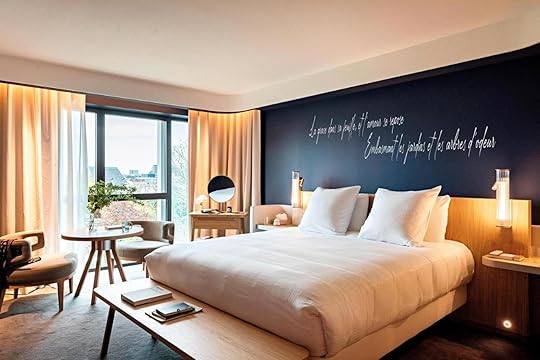 Photo: Booking.com
Photo: Booking.com Photo: Booking.com
Photo: Booking.com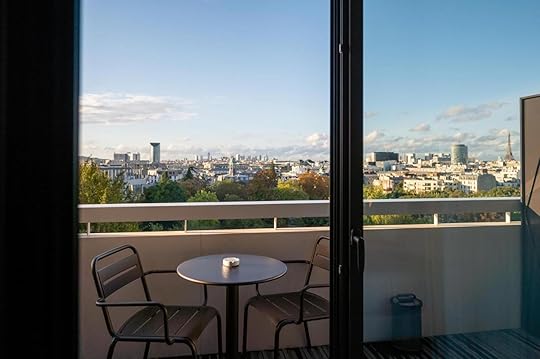 Photo: Booking.com
Photo: Booking.comChef Jean-Philippe Perol operates Marguerite 1606, a plant-based restaurant onsite. The restaurant features vegetarian takes on French classics and original ideas, including a popular Sunday brunch inside a historic glass-roofed dining room. In true Euro fashion, the Marguerite bar bagins the afternoon with teas and juices before moving into spiked libations in time for sundowners, though visitors should also stop by the rum bar located in a converted chapel. There’s no better place in Paris to raise a toast to the tides of history. 
Africa Cruises: What to Know About the Growing Cruise Destination
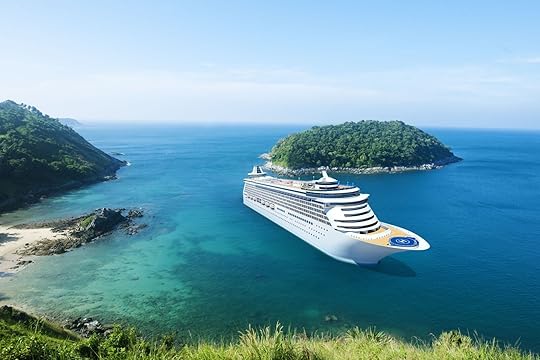
When most Americans think of cruises, they probably think of island-hopping in the Caribbean or cruising by glaciers in Alaska from afar. That may be appealing for some people, but for others, the idea of being lazy on a ship of thousands of people for a week doesn’t sound like much of a vacation.
But what if instead of doing a major Caribbean cruise, you did something far more adventurous: a major African cruise with wildlife safaris every day?
Most major US cruise lines that offer cruises to Africa make stops around southern Africa, taking advantage of a huge selling point of countries like South Africa, Botswana, Mozambique, and Madagascar: safaris. Africa cruises tend to be longer than those sailing from Miami or Cozumel, but they can be far more exciting, offering the chance to go on a safari drive in Africa almost every day without the need to sleep in the bush, drive long distances, deal with logistics or planning, or even unpack more than once. You’ll visit some of the best countries in the world for safaris without the need to switch hotels or fly between remote destinations.
Here’s what to know about cruises to Africa with the major US cruise lines.
What cruise lines go to Africa?Booking safaris and excursionsWhat to know about third-party excursionsAfrica cruises vs. tropical cruisesHow adventurous are Africa cruises?Extra things to consider about cruises to AfricaWho will like a safari cruise?What cruise lines go to Africa?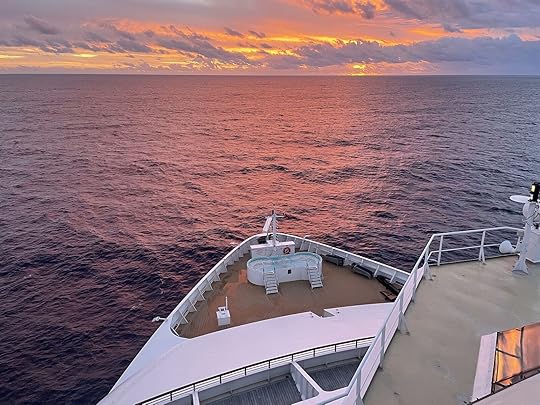
Relatively few of the major cruise lines in the US offer cruises to Africa. Photo: Suzie Dundas
It may be surprising to know that not that many of the major US cruise lines offer dedicated Africa cruises. If you’re keen on a “small ship” cruise or an adventure cruise with a company like Mantis Journeys or Swan Hellenic, you’ll find many more options. But they can be quite pricey, and won’t earn you any points if you’re a member of a major cruise reward program.
Fortunately, a few of the most popular big cruise lines are starting to offer cruises to Africa.
Norwegian Cruise Lines: I went with Norwegian and I’d absolutely do another one, despite some hiccups (more on that below). For the best mix of comfort and price, it’s hard to beat. In 2025, Norwegian has 13 different trips to Africa, leaving primarily from Cape Town, Qatar, and Mauritius. The various trips make stops in places like Seychelles, Mozambique, South Africa, Kenya, Réunion, Tanzania, Senegal, Gambia, Sao Tome and Principe, Madagascar, and more. Prices for 2025 cruises start around $1,900 per person with lots of included perks — but in the weeks before I left for my 12-day southern Africa cruise, I saw rates listed as low at $599 per person. You won’t beat that.
Silver Sea: Silver Sea has 17 Africa cruises in 2025, leaving mostly from Cape Town. It has slightly fewer safari-focused ports of call, but also makes stops in places like Namibia, Seychelles, and Madagascar. Cruises are much smaller than Norwegian’s at around 600-700 guests per cruise, and it tends to be much pricier: the cheapest 2025 Africa cruise is a 15-day round-trip from Cape Town, South Africa, starting at $8,500 per person.
MSC: MSC has a smaller amount of Africa cruises available, and only makes stops at six ports: three in South Africa, as well as Namibia, Mozambique, and Mauritius. The company has seven Africa cruises available in 2025, the longest of which is only five nights. That makes an MSC cruise a good add-on to a longer trip through South Africa, rather than using it as your entire vacation. The least-expensive is $687 per person for a three-night sail.
Africa cruise excursions
A herd of Elephants in Addo Elephant Park, South Africa, as seen via a 4×4 excursion from the Norwegian Dawn. Photo: Suzie Dundas
Without a doubt, the most popular type of shore excursion on an African cruise is the game drive. You’ll find game drives through national parks or private reserves offered at nearly every port of call on a cruise to Africa. That allows guests to go on a safari nearly every day of their cruise if they’d like, though there are a few things to keep in mind.
The excursions may be pricier than you’re used to on other cruises. On my Norwegian cruise, the cost for an activity including transportation from the ship, a two-hour game drive, and transportation back to the ship (no lunch, no other activities) ranged from $179 for the closer safari parks to more than $400 for all-day trips to further away safari parks that included lunch and drinks. That’s to be expected, considering the long bus rides to some of the parks and the fact that the fee includes park fees, gas/fuel, the services of a safari guide, and transportation to the parks/reserves.
My cruise on the Norwegian Dawn was inexpensive, so it made it easier to spend more money on the excursions. But you should plan to spend a higher percentage of your vacation funds on excursions, especially as some ports don’t offer a lot to do within walking distance.
Pro tip: popular excursions on Africa cruises often sell out. Book them in advance; you can always cancel if you change your mind later. Before booking, check out Matador’s guide to shore excursions and how to figure out if they’re worth the cost.
Africa independent excursions
Third-party and local companies like “Safari for Six” can be good options for travelers who don’t care to book through the cruise line excursion desk. Photo: Suzie Dundas
You absolutely do not need to book excursions through your cruise company. Booking through local companies (or websites like Viator and GetYourGuide) can be a lot cheaper and good alternatives if the excursion you want is sold out or not offered through your cruise company. They also put more money directly into the pockets of locals who may not otherwise see much economic gain from cruise traffic. But unlike cruises in Western destinations, you may not be able to just do an online search for “cruise excursions” and book something easily from your phone.
In much of Africa, booking via Facebook or WhatsApp is common, and legitimate companies may not even have websites. So you’ll need to be a bit of a savvy traveler to book them. The downside of booking excursions not through your ship means the ship will leave without you if you’re late. But it’s very, very rare for companies to get cruisers back to their ships too late — it’s not good for business if online reviewers say “I missed my cruise.” Reputable companies will be happy to answer questions and communicate before you book via email or WhatsApp. Many tourist guides in Africa speak four or five languages, so be sure to ask if your tour will be English-speaking, or a mixed-language group.
You can also find guides through unofficial Facebook pages. Most cruises have an unofficial Facebook page. Just type in the name of your ship on Facebook, and you’ll probably find them. On these pages, it’s common for guides and guiding companies post ads for their services, and for other travelers to make recommendations of companies they’ve used.
I found the company we used in Richards Bay, South Africa (Shout out to Safari for Six) via a comment on a Facebook page for the Norwegian Dawn ship, and we had a great time. For $170 per person, we got to do a two-hour boat safari, plus a four-hour game drive with lunch.
What’s different about Africa cruises vs. tropical cruises?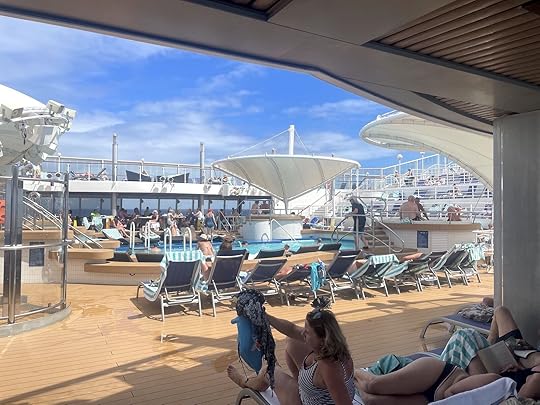
On many Africa cruises, the only pool or lounging time you’ll have is on the ship, as many ports of call are focused on adventures and wildlife, not beaches. Photo: Suzie Dundas
Aside from the obvious (you’ll be visiting cities in Africa, not tropical islands), there are a few things to prepare for if you’re thinking about looking more info Africa cruises.
Some ports of call and harbors in Africa are fairly new to welcoming big ships, so they may not have all the kinks worked out. Be flexible and patient, and don’t expect to have tourist-friendly restaurants and stores within walking distance at each port. It’s essential to do some light research to figure out what to expect at each port. For example, when my cruise stopped in Richards Bay, South Africa, people were shocked to learn that the port is also a coal shipping terminal, and that there’s not much to do within walking distance. Had they spent even five minutes researching the port, they could have figure that out and planned accordingly.You may want to get some extra vaccinations and carry preventative medicine. It’s up to you. But depending on where you’re going, you may want to carry malaria pills, or get some basic vaccinations like DPT (diphtheria, pertussis, and tetanus), or a yellow fever vaccine if you’re traveling on the western coast of Africa. Even without vaccines, you’re still unlikely to catch any diseases, but som travelers may find that being vaccinated agains them gives them a little extra peace of mind. You can get most basic international vaccinations at local pharmacies like CVS and Rite-Aid. (In South Africa, most parks are malaria-free.)How active are cruises to Africa?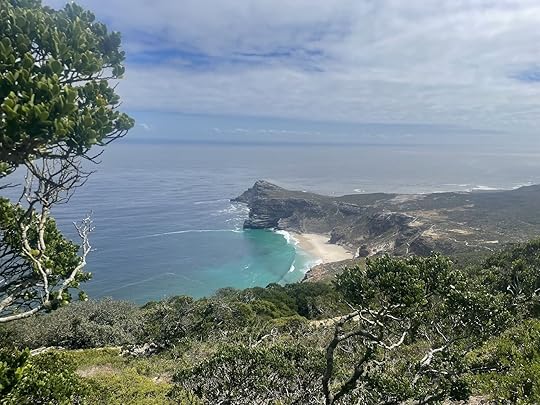
On my trip, a day tour of Cape Town included the opportunity for a quick and steep hike to a lighthouse near the top of the Cape of Good Hope. Photo: Suzie Dundas
On Africa cruises, you’ll likely still have excursion options like beach visits and snorkeling trips, but they’ll likely be fewer and far between. Most excursions won’t be quite as leisurely as those you’d find on Caribbean or South Pacific cruises, though they still cater to older and less-active audiences. But if you’re going on a cruise to relax and put your toes in the sand, you won’t find that at as many ports in Africa as you would in the tropics.
What you will, find, however, are bouncy Jeep rides across dirt roads to go in search of elephants, chances to visit small communities for traditional outdoor BBQs, opportunities to paddle small canoes through birdwatching reserves, and options for visiting botanical gardens or budding wine-tasting regions.Yes, if you want something very active, like a distance hike or rock climbing trip, you’ll probably need to book it on your own. But most cruises to Africa will have a few more soft adventure-type excursions at each port than you’d find with more beach-focused cruises.
For frequent active travelers, it may seem tame. But for people used to more traditional cruises, it’ll likely be a bit more active and adventurous than you’re used to.
The downsides of Africa cruises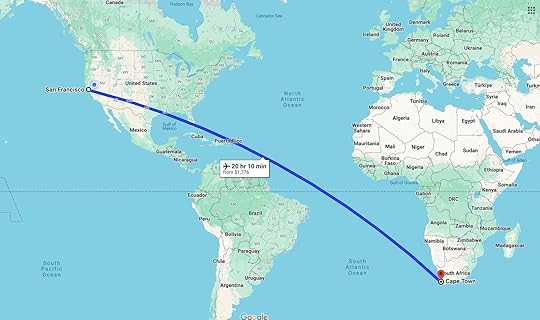
Depending on where you live, getting to the starting point for your cruise could add days of travel on either end. Photo: Google Maps
While safari cruises are pretty exciting, they have some downsides. The first is usually the cost and time to get to the starting point. Popular departure ports include Cape Town, South Africa; Dubai, UAE; and Doha, Qatar. None of these destinations are particularly close for travelers in the US, nor are they inexpensive to reach. So you’ll need to take travel time and cost into account when planning. Consider also that most cruises to Africa are on the long side (usually at least 10 days).
The second downside is one relevant to most cruises: you don’t get to spend much time in each destination. This can be a bit of a downside on game drives, since most animals tend to me more active at dawn and dusk, as opposed to the middle of the day. Since you’ll arrive around 7 or 8 AM every morning and need to be back on board by about 5 PM each day, your only options for game drives are in the middle of the day. You’ll still see animals, but just that your chances are a little lower of seeing more elusive species, like lions and leopards.
Who should consider an Africa cruise?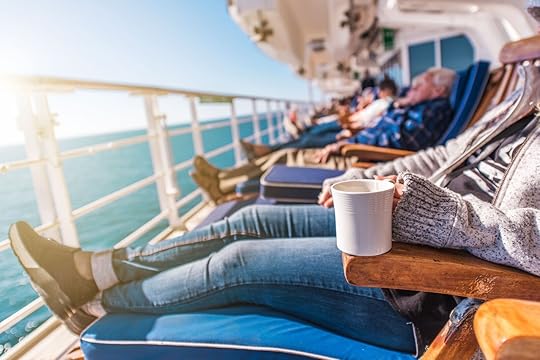
Africa cruises can be ideal for mixed-generation trips, where some travelers want to take it easy but others want to spend their days on adventures. Photo: Virrage Images/Shutterstock
The honest answer here is that most everyone would enjoy an Africa cruise. But the more dialed in answer is that they’re well-suited to people who have always dreamed of going on safari vacations or seeing far-away villages and landscapes, but who aren’t comfortable navigating foreign countries on their own. Seeing Africa by cruise ship takes away much of the uncertainty and unknowns that can make some travelers hesitant to travel too far out of their comfort zones. It’s also a heck of a lot easier to plan a cruise than it is to put together an entire safari trip.
That makes Africa cruises an obvious choice for older travelers or travelers who are new to international travel. There was a running joke on my shjp that it was “Africa Lite:” a chance to get a taste of the continent, and travelers who wanted to see more could return for dedicated land-based trips after their cruises. I would feel much more comfortable having my retired parents experience a safari via a cruise ship, rather than sending them to navigate traveling through Johannesburg on their own.
Africa cruises would also be great for multi-generational trips with kids, parents, and grandparents. Cruises in general are well-suited to that type of travel group, but Africa cruises are especially ideal as they allow everyone to safely “adventure” together, even if ages range from 5 to 95. They’re also great for friend groups where some travelers have a taste for adventure, and others are more afraid of the unknown. Everyone can safely do what they want on excursions, but meet up each evening for dinner, drinks, and entertainment. 
9 New Cruise Ships Launching in the Next Few Years You’ll Want to Know About
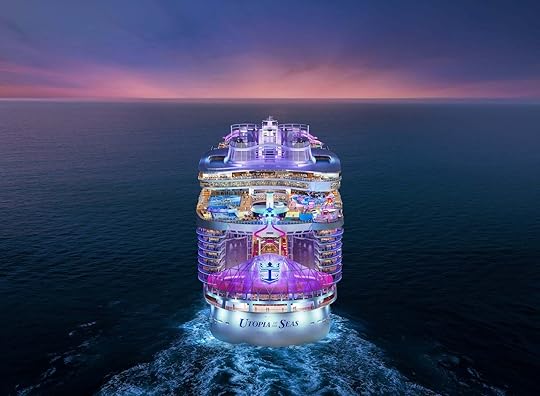
If you’d like to take a cruise on a brand new ship, there’s never been a better time. Most major cruise lines are expecting new ships to debut in 2024, 2025, and 2026, all of them fitted with all the bells and whistles of modern cruising, including dozens of restaurants, suites with unbeatable views of the ocean, never-seen-before deck activities, gigantic and fast slides, and more. There will be something for every type of travelers out there, whether you’re looking for a luxurious and timeless experience, or some relaxed and fun times with the family.
Editor’s note: While Disney Cruise Line’s Disney Destiny and Virgin Voyages’ Brilliant Lady are scheduled to launch in the next couple of years, only few details are currently available. Those ships have therefore not made the list.
Cunard’s new cruise ship: Queen Anne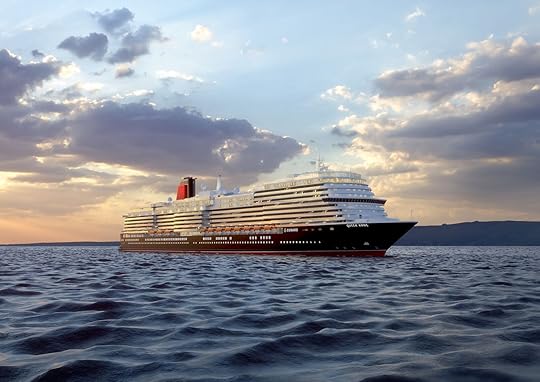 Renderings: Cunard
Renderings: Cunard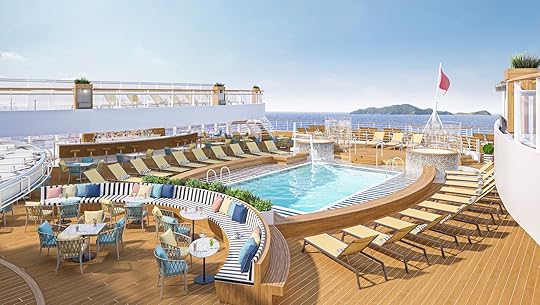 Renderings: Cunard
Renderings: Cunard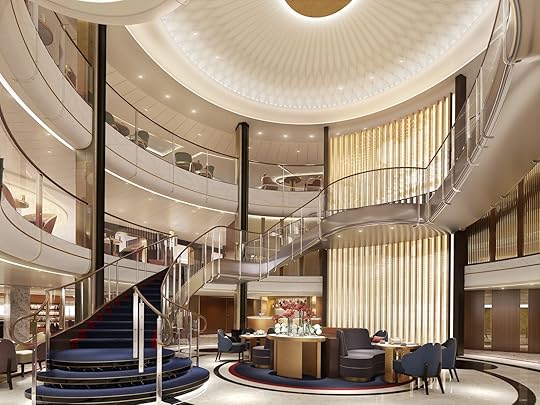 Renderings: Cunard
Renderings: CunardWhile the Queen Anne will be Cunard’s 249th ship since the company’s creation in 1839, it will only be the fourth ship in the current fleet, which consists of the Queen Mary 2 (the world’s last ocean liner still in service), the Queen Elizabeth, and the Queen Victoria. The Queen Anne will the first new Cunard ship in 13 years.
What makes it special: The only ship on the fleet to feature a contemporary interior, the Queen Anne will certainly be unique at Cunard. For example, guests traveling on the Queen Anne will be able to learn and practise archery on board, a brand new deck activity that you won’t find on any other cruise ship. The ship will be be home to 15 restaurants, including two new dining concepts: Aji Wa, for Japanese cuisine, and Aranaya, for Indian flavors. Captain Inger Klein Thorhauge, the first female captain appointed by Cunard, will take the elm of Queen Anne.
Capacity: 3,000 guests
Maiden voyage: A seven-night sailing from Southampton, England, to Spain and Portugal, departing on May 3, 2024. This voyage is sold out.
Naming ceremony: June 3, 2024, in Liverpool during the 14-night British Isle Festival Voyage. The ship’s godmother has not been announced yet.
Royal Caribbean’s new cruise ship: Utopia of the Seas Renderings: Royal Caribbean
Renderings: Royal Caribbean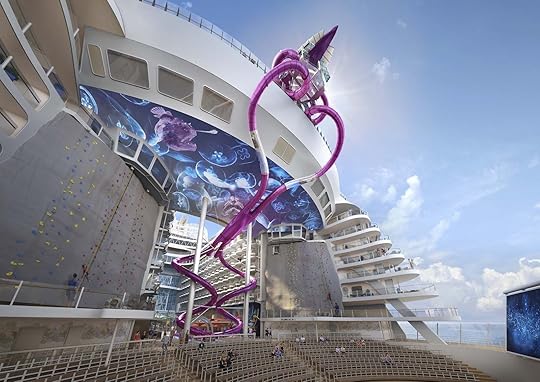 Renderings: Royal Caribbean
Renderings: Royal Caribbean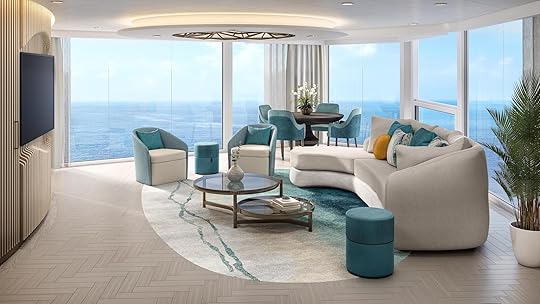 Renderings: Royal Caribbean
Renderings: Royal CaribbeanWhile Royal Caribbean’s Icon of the Seas, currently the largest cruise ship in the world, made waves when it was launched in January 2024, it’ll soon be eclipsed by an even-bigger ship: Utopia of the Seas.
What makes it special: This megaship will have 18 decks where you’ll find 24 restaurants (10 of which will be complimentary), 13 bars and lounges, and a slew of amenities, including the Ultimate Abyss, a 10-deck-high, 259-foot-long slide (the longest at sea). A new concept, Royal Railway – Utopia Station, will offer a virtual reality dining experience onboard a train replica. New on this ships will be the Solarium Suites, which will feature full glass walls offering travelers panoramic views on the ocean.
Capacity: 5,668 guests
Maiden voyage: July 2024
MSC Cruises’ new cruise ship: World America
Rendering: MSC
World America will be MSC’s second-largest cruise ship, with MSC World Europa being the largest. However, it will be the largest MSC Cruises ship serving the US market.
What makes it special: This megaship will have 22 decks on which you’ll find 13 restaurants, 20 bars and lounges, six pools, 14 hot tubs, an 11-deck-high slide, and a waterpark. World America will run on LNG, a lower-emission fuel, and is fitted with propellers designed to reduce underwater noise pollution.
Capacity: 6,762 passengers
Maiden voyage: Starting April 12, 2025, World America will sail seven-night Eastern and Western Caribbean itineraries.
Naming ceremony: April 9, 2025, at MSC Cruises’ cruise terminal in Miami (the largest cruise terminal in the world). The naming ceremony will be followed by a celebratory sailing with an overnight stop at Ocean Cay MSC Marine Reserve.
Oceania Cruises’ new cruise ship: Allura
Rendering: Oceania Cruises
Allura will be ultra-luxury Oceania Cruises’ eighth ship in the current fleet, and the sister ship to Vista, which launched in 2023.
What makes it special: An onboard crêperie, serving freshly made crêpes and waffles to order in the morning and gelatos in the afternoon. One chef for every 10 guests and two crew members for every three guests, making for an extraordinary level of service. Five specialty dining venues, including two new complimentary restaurants: Ember and Aquamar Kitchen.
Capacity: 1,200 guests
Maiden voyage: A seven-day journey from Athens to Istanbul, departing on June 8, 2025
Uniworld’s three new ships: S.S. Victoria, S.S. Elisabeth, and S.S. Emilie Photos: Uniworld Boutique River Cruises
Photos: Uniworld Boutique River Cruises Photos: Uniworld Boutique River Cruises
Photos: Uniworld Boutique River Cruises Photos: Uniworld Boutique River Cruises
Photos: Uniworld Boutique River CruisesUniworld Boutique River Cruises is launching three new ships in three years: The S.S. Victoria in March 2024, the S.S. Elisabeth in 2025, and the S.S. Emilie in 2026. With the recent addition of the S.S. Victoria, there are 17 ships currently in the Uniworld fleet.
What makes it special: The S.S. Victoria consists of 55 luxurious suites and staterooms, each fitted with full-length windows and king-sized beds. There are two Royal Suites on board, each offering 506 square feet of space. There is also a massage room, pool, gym, fine-dining restaurant, a bistro, and a rooftop bar.
Capacity: 110 guests
Maiden voyage: An eight-day Holland & Belgium at Tulip Time cruise departing from Amsterdam on March 24, 2024.
Norwegian Cruise Line’s new cruise ship: Norwegian AquaProbably the most colorful cruise ship in the world, the Norwegian Aqua will be twentieth ship in NCL’s fleet.
What makes it special: Norwegian Aqua features the world’s first hybrid rollercoaster and waterslide, the Aqua Slidecoaster, as well as Glow Court, a new sports complex with an interactive LED floor. Norwegian Aqua will also be the first NCL ship whose hull was designed by a major female hull artist, Allison Hueman.
Capacity: 3,571 guests
Maiden voyage: A seven-day caribbean sailing from Port Canaveral, Florida, in April 2025. Bookings for Norwegian Aqua’s first sailings are already open.
Princess Cruises’ new ship: Star PrincessPrincess Cruises launched a brand new ship, the Sun Princess, in February 2024, and its sister ship, Star Princess will make its debut in August 2025.
What makes it special: The Star princess will be 20 percent bigger than any other Princess Cruises ships and feature 21 decks, 2150 guest cabins, a three-story dining room, and a glass-enclosed dome hosting an indoor/outdoor pool during the day and a stage at night.
Capacity: 4,300 guests
Maiden voyage: A Caribbean sailing in August 2025. Bookings are available now. 
The Worst US Airports to Fly Through If You Have a Tight Connection
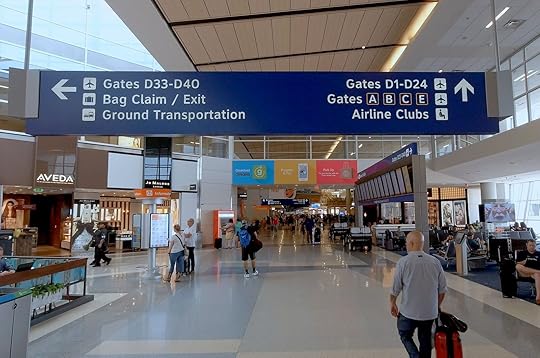
There’s an art to connecting flights. On the one hand, nobody wants to spend more time at the airport than they have to. On the other hand, layovers need to budget enough time between landings and takeoffs to ensure that you make it to your final destination on time.
How long you need to make a connecting flight depends on the airport. The sheer size of some airports can make the trek from one gate to another daunting. Take Denver International, the largest airport in the US and the second largest airport in the world, which measures 53 square miles. As one X user pointed out, that makes the Denver airport larger in land area than San Francisco.
exact same zoom level https://t.co/oakfbVU4aX pic.twitter.com/asavslO0Bu
— north (@north0fnorth) March 25, 2024
KURU Footwear evaluated US airports to determine whose terminals contain the longest and shortest walking distances. The results are as expected: Large, highly trafficked airports have the terminals with the longest distances — over two miles in the case of the farthest stretch — while the shortest walks belong to smaller airports.
Interestingly, the longtime busiest airport in the world, Atlanta Hartsfield-Jackson, eluded the list of the top five airports in the US with the longest walking distances.
The US airports with the longest walking distancesDallas/Fort Worth International Airport in Dallas, Texas — 2.16 milesWashington Dulles International Airport in Dulles, Virginia — 1.62 milesGeorge Bush Intercontinental Airport in Houston, Texas — 1.52 milesDenver International Airport in Denver, Colorado — 1.45John F. Kennedy International Airport in New York, New York — 1.38 milesThe US airports with the shortest walking distancesBlue Grass Airport in Lexington, Kentucky — 0.11 milesWestchester County Airport in White Plains, New York — 0.12 milesHarrisburg International Airport in Middleton, Pennsylvania — 0.13 milesLihue Airport in Kauai, Hawaii — 0.18 milesHollywood Burbank Airport in Burbank, California — 0.20 milesKURU Footwear framed the data as an examination of how much legwork passengers might have to put in from check-in to boarding, but the results are worth keeping in mind for your next flight connection, too. While there are other factors to consider when it comes to making a connecting flight — such as whether you’re traveling internationally or domestically, if you’ll need to switch terminals, how busy a given airport is, and how efficiently that airport operates — the last thing travelers need when their gate is threatening to close is a two-mile hike.
On the other hand, KURU Footwear also polled 800 Americans on their travel habits, and if you’re anything like the 33 percent who spend an hour walking around the airport before their flight, now you know which airports will help you get your steps in before takeoff. 
This Boutique RiNo Hotel Is Denver’s Luxurious Hangout for Visitors and Locals

There are plenty of awesome Airbnbs and hotels to choose from in Denver, Colorado — but this chic 50-room boutique hotel was the first hotel in Denver’s trendy, industrial, creative RiNo neighborhood. It’s within walking distance of dozens of hot breweries, distilleries, restaurants, and shops and offers easy access to downtown’s central business district.
The interior decor was inspired by Madame Rambouillet’s French Salons of the 17th century. These salons were set to offer a safe space to share ideas and create a feeling of community — which is exactly what this hotel aims to do centuries later — encourage engaging interactions for travelers and locals.
Stepping off the street into the grand marquee lobby feels like stepping back straight over to another time, in another land. In the marquee lobby bar, host to the incredibly sought-after Colorado offshoot of the New York cocktail bar — Death & Co Denver, crystal chandeliers hang from vaulted ceilings with brick wall facades covered in enormous warehouse-style windows adorned with rich velvety blue curtains.
Traveling to Colorado? Check out Matador’s Colorado accommodation guides to the best places to stay across the state: 11 unique Airbnb Colorado rental homes for your next group getaway 10 Airbnb Estes Park rentals near Rocky Mountain National Park These Denver airport hotels put you close to the terminal with luxe amenities The best Airbnbs in Denver for beer, 420, and mountain culture Vail Airbnbs that make you feel like you’re in the heart of Bavaria

Photo courtesy The Ramble Hotel
There’s plenty of natural light flooding in during the day. At night, the space transforms into a sultry, eclectic feeling, intimate space for grabbing a well-made cocktail and a top-notch bite to eat. But the stunning design and architecture don’t stop there — it’s complimented by a carefully curated collection of artwork that feels timeless and exudes a sense of “relaxed elegance.”
We hope you love The Ramble Hotel! Just so you know, Matador may collect a small commission from the links on this page if you decide to book a stay. Listed prices are accurate as of the time of publication.
Room types at The Ramble Hotel
Photo courtesy The Ramble Hotel
There are a few variations of rooms to rest — each of which features rich decor, including high-quality wide-plank, hickory flooring, antique Persian rugs, and soaring, functional windows.
In the King Suite, sink into the plush, pillow-top king mattress or settle into the cozy sitting nook framed by a large window with views of the streets below for great people-watching.
In the Corner King Suite, admire views from the two walls of windows that overlook the intersections of 25th and Larimer Streets. In the Juliette King, admire sights of the hotel’s intimate courtyard garden and open the sliding glass doors out to the Juliette balcony to bring in some fresh air.
The similarly appointed Juliette Suite includes two sets of sliding French doors, a cozy reading room, and a king bed, all overlooking the intimate courtyard garden for ample peace and quiet.
A fun room variation called the “Bunkhouse” is a setup that features a cozy, private room that sleeps two in one stacked bunk bed with a Juliette balcony overlooking the courtyard below. The Salon Suite suite is a prime corner suite with a bar and lounge seating space through a comfy sectional sofa, a sleeping area with a king pillow-top mattress, and multiple windows.
Finally, those seeking to splurge can book a stay in the Pied- à -Terre room — the hotel’s largest suite, which is meant to feel like a “classic Denver loft with Parisian sensibility.” In this large room, designed to entertain, guests are basked in plentiful natural light and can admire impressive views of downtown Denver. There’s a living room space and a separate bedroom and bathroom with a walk-in closet, king bed and a large bathroom featuring a large, claw foot soaking tub.
Artwork and design at The Ramble HotelThe Denver-based curators NINE dot ARTS curated the hotel’s artwork program, which includes works in public spaces and guest rooms. The artwork program aims to embrace the literal definition of the word “ramble:” which means “to wander, to explore without destination,” and is fitting for its location in the artsy River North district of Denver. The collection mostly comprises Denver-based artists (most of whom have studios in the RiNo neighborhood).
Dining and drinking on-site
Photo courtesy The Ramble Hotel
Guests of The Ramble Hotel get priority reservations at the on-site establishments — and should definitely take advantage of the chance to visit them.
DC/AM serves as a community coffee hub operating in the marquee lobby space in the morning and early afternoon, with a wide selection of teas, espresso drinks, juices, and breakfast bites in the earlier hours. In the afternoon, the menu transitions to host lunch offerings paired with a robust cocktail menu, beer, and wine lineup.
Death & Co., which lives in the same space as DC/AM, is an institution in the drinking and dining world. Its roots date back to 2006 in New York, having expanded to Denver to showcase its experience as a “must-visit” destination for cocktail enthusiasts. Death & Co. has won many major industry awards, including “America’s Best Cocktail Bar” and “World’s Best Cocktail Menu” at the Tales of the Cocktail Convention. The creativity and passion felt at this bar are practically unparalleled and the extensive cocktail and dinner menu in the evening are an experience that’s not to be missed.
Adjacent to Death & Co. up in the mezzanine space, visitors will find Suite 6A — an intimate space that can host fun pop-up activations. Right now, it’s the Sakura Blossom Bar, which runs Thursday through Sunday evenings through April 28, featuring over 400 cherry blossoms covering the ceiling, complemented by the music of vintage Japanese records, Japanese-inspired bites, and craft cocktails.
Super Mega Bien is a walk-in-only independent pan-Latin restaurant from James Beard-nominated Chef Dana Rodriguez serving Latin American food and cocktails, offered “dim sum” style by way of wandering carts. Diners can choose from a lineup of constantly changing small plates and elaborate, shareable dishes in a fun, eccentric atmosphere.
And open seasonally from May through October, The Garden serves as a casual gathering space to soak in the sunshine and fresh air in a lively setting, serving a full dinner menu and refreshing drinks.
Other out-of-the-box amenities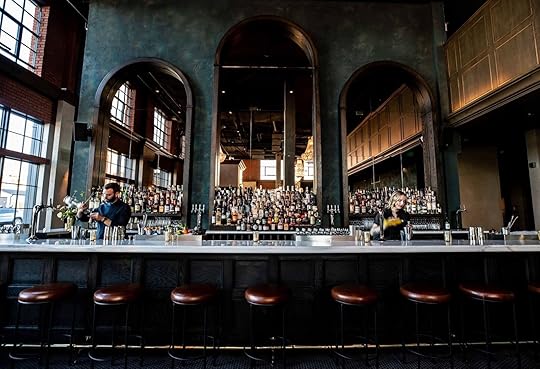
Photo courtesy The Ramble Hotel
There’s a small, 24/7 fitness room on-site that features two treadmills, an elliptical, and free weights. The room has a Juliette balcony with sliding doors overlooking the courtyard garden space, meaning constant fresh air flows throughout.
The property is also walkable to multiple yoga studios (I got in my stretch and meditation time nearby at a local yoga studio while I was visiting) and other group fitness studios that the front desk can assist with recommending.
Another cool element of the property is the amenities inside the rooms themselves. I was incredibly dazzled by the room’s intense mini-bar situation. There was nothing “mini” about it. I felt like it should be renamed the “carefully curated megabar” instead of “minibar” due to The Ramble’s offering of an impressive selection of top liquors and genuine mixology tools.
There a menu in our room that showed how to make popular cocktails (like my favorite, the Negroni) and a wide selection of pretty reasonably priced bottles of liquor you could use to craft your own drinks in the suite itself.
Coffee lovers will be glad to know each guest room also comes equipped with an authentic French Press, with a perfectly roasted, ground and portioned ration of local coffee. No drink detail goes unaddressed, here (cocktail or coffee).
Another element of the property I appreciated was its use of real metal “keys” for guest rooms instead of plastic key cards. It felt like a charming and timeless way to incorporate a familiar sense of tradition and class into this ageless space.
The Ramble speaks to travelers seeking an eccentric, upscale overnight experience
Photo courtesy The Ramble Hotel
This property is within walking distance of many favorite Denver attractions and in a fun and trendy neighborhood itself. The architecture and decor blend tradition and trendy, and the guest rooms are comfortable but inspired. Don’t miss dining and drinking options on-site — it’s a coveted experience for visitors and locals alike. 
A New Private White Lotus-Themed Tour Brings Travelers on a Luxury Trip Through Bangkok and Koh Samui
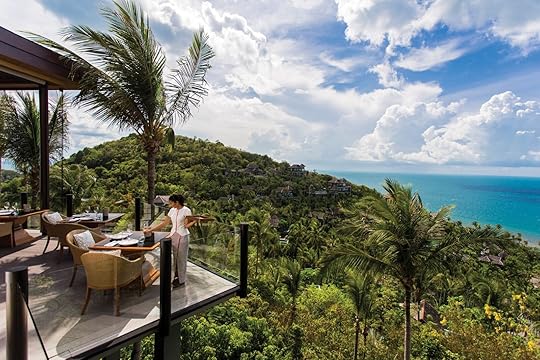
Leaving the shores of Sicily, season three of HBO’s White Lotus is being filmed in Thailand. If you’re dreaming of a stylish beach vacation White Lotus style (minus the murder, scams, and sleeping around), you’re in luck because Unforgettable Travel, a premier luxury travel company, has just launched a White Lotus Thailand tour from Bangkok to the stunning island of Koh Samui.
Are you a fan of White Lotus? Check out Matador’s White Lotus accommodations guides:Stay in the Sicilian Hotel Where Season 2 of ‘White Lotus’ Was Filmed8 Maui Beach Hotels With the Best Views in HawaiiChannel Your White Lotus Fantasy at These Thailand Airbnbs6 Thailand Hotels That Could Be Used for ‘The White Lotus’ Season 3
Due to labor disputes in Hollywood last year, the release date of the third season of White Lotus is likely to be delayed until 2025. But if you’d like to follow in the footsteps of your beloved characters with a backdrop to die for, you can join this seven-night tour between October and April.
Both season one (filmed in Hawaii) and season two (in Sicily) featured the luxury hotelier Four Seasons, so there’s a very good chance HBO will continue the partnership. There are four outposts of Four Seasons in Thailand — Bangkok, Chiang Mai, Koh Samui, and the Golden Triangle. Unforgettable Travel’s tour features two of the award winning properties.
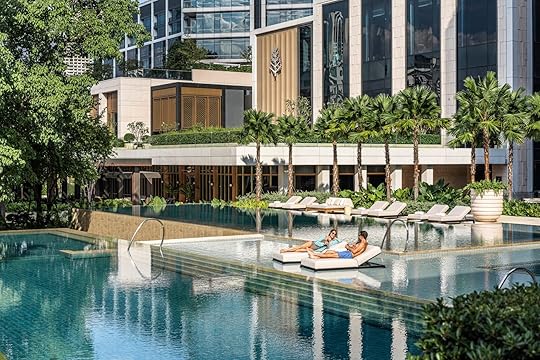 Photo: Four Seasons
Photo: Four Seasons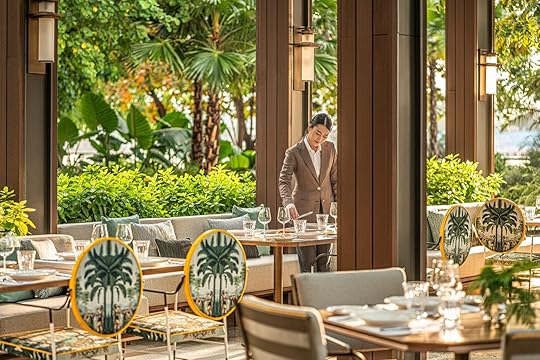 Photo: Four Seasons
Photo: Four Seasons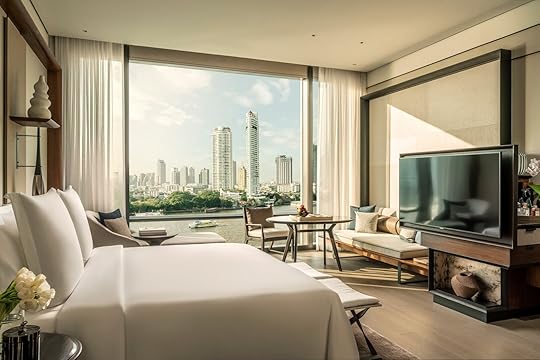 Photo: Four Seasons
Photo: Four SeasonsThe seven-day itinerary begins in Thailand’s capital, Bangkok where you will stay at Four Seasons Hotel Bangkok. Situated on the banks of the Chao Phraya River, the relatively new hotel is considered to be one of the best hotels in Bangkok. On-site, there are several restaurants and bars, including the acclaimed Thai restaurant Yu Ting Yuan. There is also a spa, a fitness center, and two swimming pools. The hotel is located in a quiet neighborhood, but it is still close to all of the major tourist attractions in Bangkok.
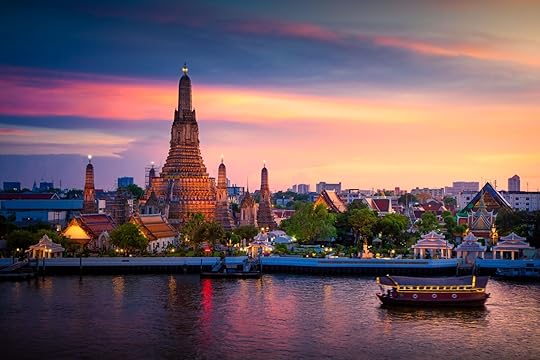
Photo: J.Thasit/Shutterstock
But you won’t have to worry about planning your sightseeing. Day two will be jam-packed with a private tour of the Grand Palace, Wat Pho, Wat Arun, and Chinatown, and numerous opportunities to sample some of the best street food in Bangkok and do some shopping. All excursions have English-speaking local guides and a private driver. In the afternoon, you’ll be welcomed to join a traditional private long-tail boat and cruise down the Chao Phraya River before returning to the comfort of your suite at the Four Seasons.
There will be ample time to explore Bangkok on your own, too. Day three allows for personal time before hopping on a speed boat towards the Chakrabongse Villa, where you’ll enjoy dinner with a spectacular view of the Temple of Dawn from the riverside terrace before exploring Old Town Bangkok before bed.
The tour includes domestic airfare to and from Bangkok Suvarnabhumi Airport to the stunning island of Koh Samui.

Photo: lkunl/Shutterstock
This flight takes around an hour, and you’ll be chauffeured between your accommodations and airports by your private driver. In Koh Samui, you’ll be staying at the world-class Four Seasons Resort Koh Samui.
 Photo: Four Seasons
Photo: Four Seasons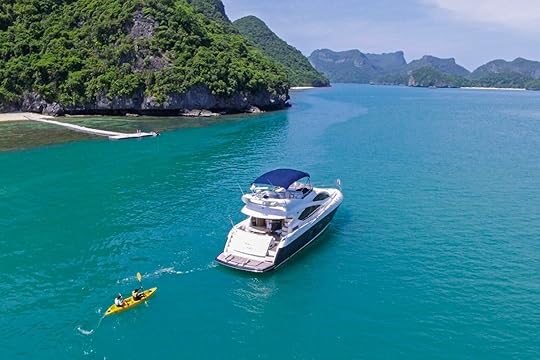 Photo: Four Seasons
Photo: Four Seasons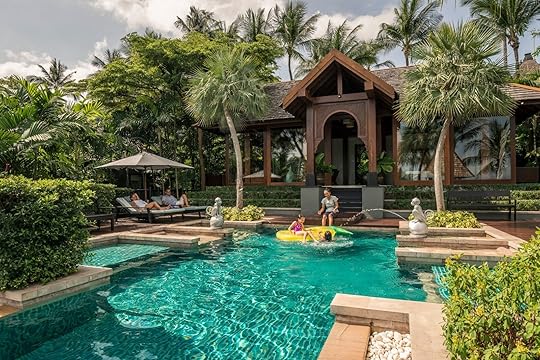 Photo: Four Seasons
Photo: Four SeasonsLocated on the northwestern tip of the island, the five-star resort has some of the best views of the Gulf of Siam and the surrounding islands. Here, you can relax by the infinity pool, soak up the sun on the private beach, or indulge in a treatment at the beautiful Secret Garden Spa. The resort will also take you on a private cocktail and canapés sunset cruise on the surrounding Andaman Sea while your final two days are free to use the resort facilities and explore the island at your leisure. The trip ends with a transfer to Koh Samui airport with the option to extend your tour to see more of the country.
Prices start from $7,744 per person. 
Matador Network's Blog
- Matador Network's profile
- 6 followers



